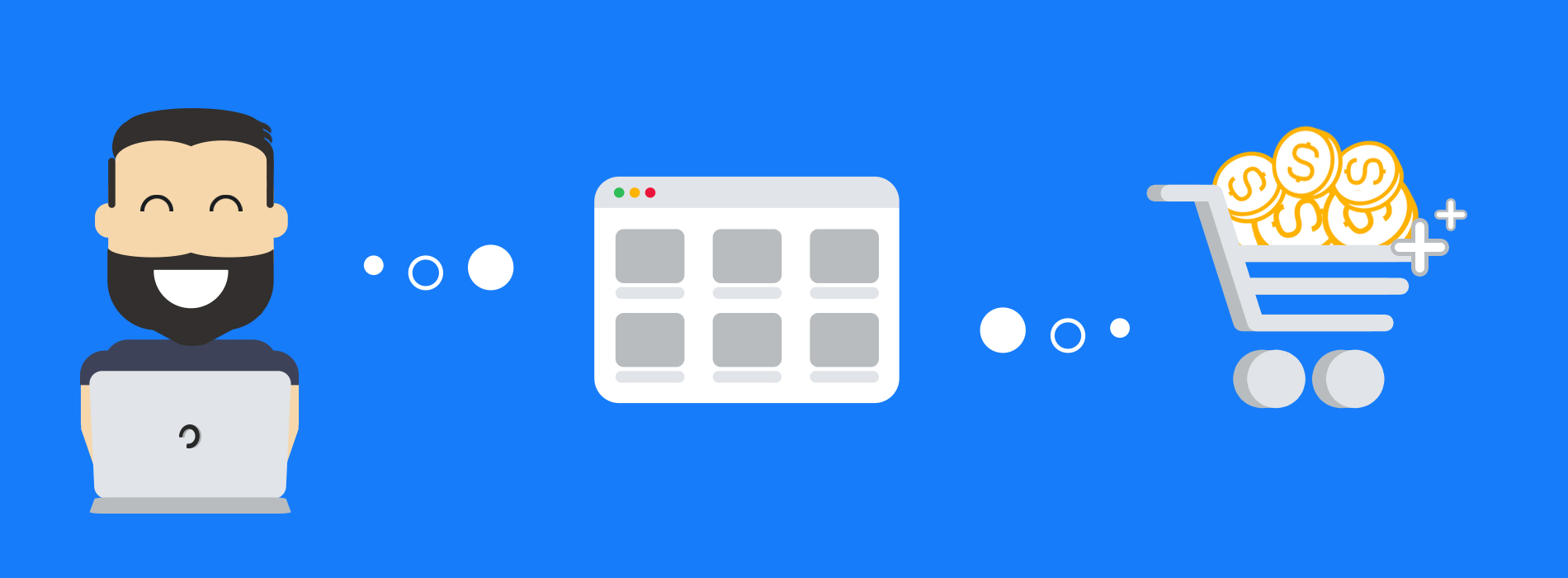Online retail has long posed problems for luxury brands, and many still need to adapt to the challenges of ecommerce.
More luxury fashion brands are now selling online, but they are still behind some other sectors when it comes to ecommerce. According to stats quoted in The Drum recently, just 9% of all luxury goods sales are made online. By contrast, 18.2% of all retail sales were online in 2018. However, by 2025 selling luxury online is due to reach 25%.
In our 2021 Fashion Ecommerce Trends Report (coming soon), we look at the current state of luxury fashion ecommerce, comparing the luxury and consumer fashion markets. We also provide in-depth insights and online shopping statistics from over 150 of the world’s biggest fashion brands and we harvest our insights from over 77 million online user journey’s in the last 12 months.
Consumer vs Luxury Fashion Item Trends Online
Selling luxury online is very different from selling consumer fashion. For example, luxury goods require higher pricing and a very different way of marketing. The average order value of a luxury fashion item is much higher than consumer, which has a direct impact on some of the other trends and luxury selling techniques, which we’ll explore.
According to Deloitte, millenials and Gen Z (in other words, people born between 1981 and 2015) are expected to make up 40% of the luxury goods market by 2025.
These younger consumers are more digital than before. They expect to be able to interact with and buy from luxury brands through a variety of digital channels. This a superior online experience which delivers the convenience and ease of purchase that consumers expect.
The chart below suggests how to sell luxury brands online. For example the majority of online sales are coming from mobile devices in both luxury and consumer fashion markets.
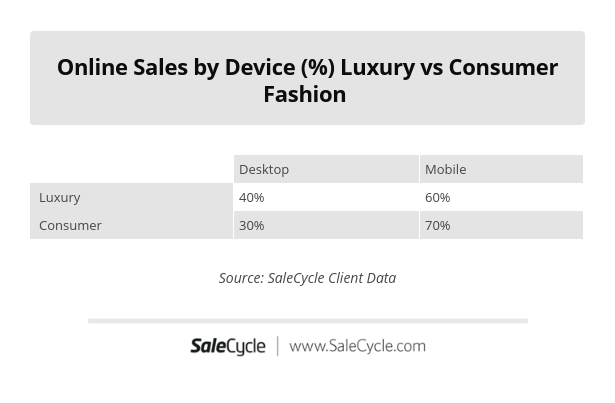

As mentioned above, the average order value (AOV) of products in the luxury sector are much higher, which can have an impact on the luxury marketing techniques.
It’s no surprise that luxury retailers are selling their high end products to a smaller customer base. This means time and marketing focus must be on customer service, personalisation and cultivating loyal relationships through customer service and retention marketing.
Those selling luxury items online are already ahead of the curve and are making $192.87 more per basket. A great tactic to increase your average order value is to use upselling and cross-selling emails, which perform well in fashion.
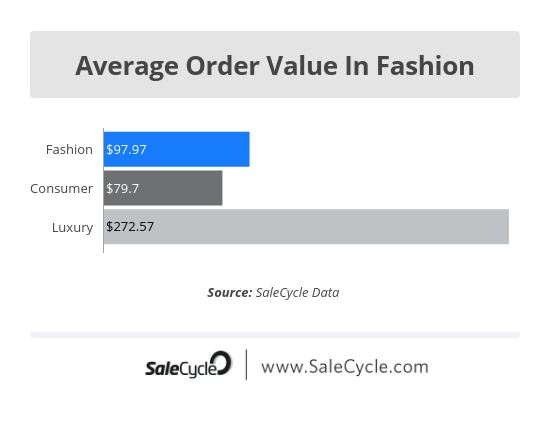

One of the most important trends within any ecommerce market to keep track of is online traffic. Online traffic is your customers so it’s important to understand where your traffic is coming from, what devices are being used, peak times for online shopping and more.
In the consumer and luxury fashion ecommerce markets, traffic coming from mobile devices is much higher than desktop. This highlights the importance of creating a customer experience that’s fit for mobile devices while also thinking about a mobile first marketing strategy.
High amounts of traffic also means you can collect enough data to launch a browse abandonment solution, which tracks your users through your site. You are then able to fire messages on-site, in SMS or in emails to lure them back to the product they were browsing.
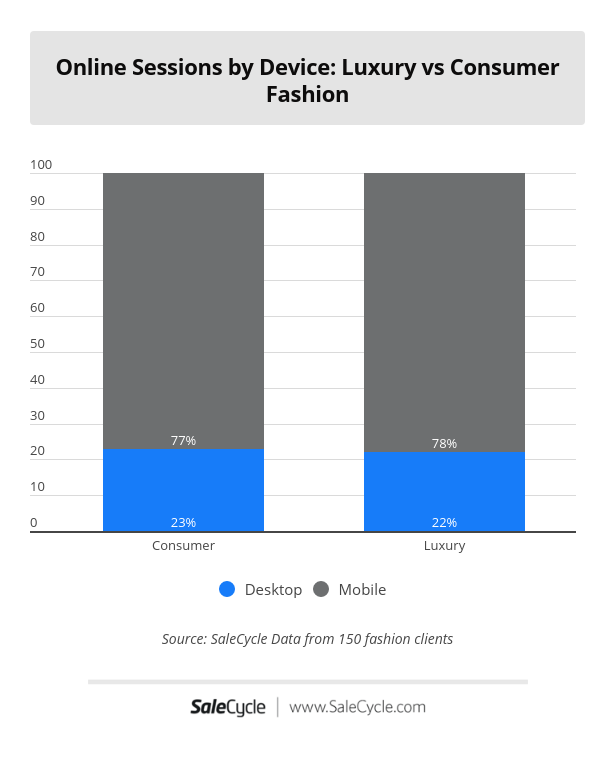

Email marketing statistics in 2020 in the luxury industry shows high engagement rates compared to consumer fashion, such as clicks and opens. However, the conversion rates in luxury fashion are still lower.
This insight throws up many questions. For example, how much does AOV impact conversions, what type of marketing techniques are being used, what device are customers using and more.
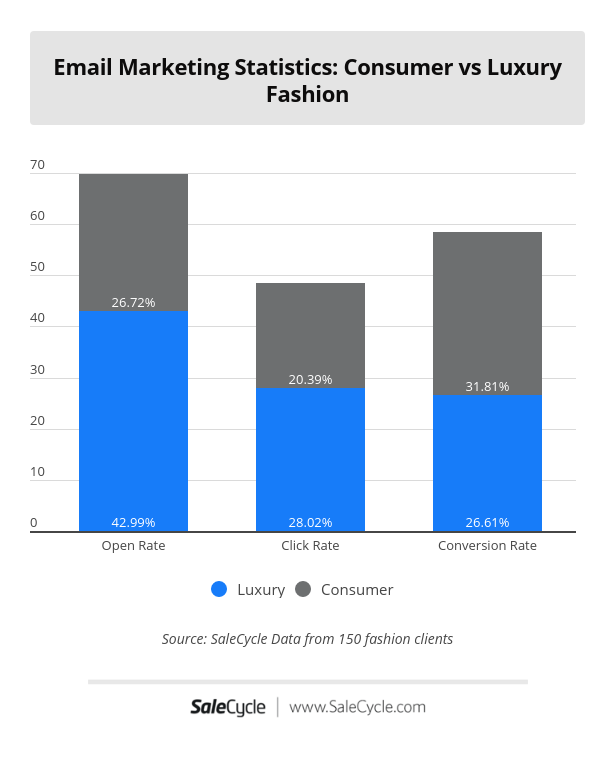

What Challenges Are Luxury Retailers Facing
Ecommerce has posed a unique challenge for luxury brands. There are organisational issues holding some back, with the mindset that the always-on availability of online retail clashes with the luxury marketing ethos.
This ethos is reflected in the laws of ‘anti-marketing’ set out by Vincent Bastien which sees marketing for luxury products as fundamentally different, and frowns upon selling online.
It’s not necessarily an attitude held by all brands now, but it does explain the relative reluctance of luxury brands to sell online. Chanel, for example, initially dismissed ecommerce, before introducing a transactional site in 2016.
The sheer growth in online retail has forced many brands to take one seriously, while the attitudes of many current and future customers mean that digital channels simply cannot be ignored.
Consumer fashion retailers are able to use tools like ecommerce countdown timers and promo codes to increase their conversion rates. Using codes and flash sales allows consumer fashion marketers to be far more agile and creative.
Providing a superior experience, when consumer fashion retailers have been honing their online experience for more than a decade, is a challenge for luxury brands.
Luxury Products Selling Techniques
Luxury retailers are selling higher-value products to generally smaller numbers of customers, and this means they have more time and resources to focus on customer relationships, when compared to mass-market retailers.
This allows luxury brands to focus on keeping loyal customer segments happy with a more personal service and perks like exclusive access to new collections and private sales.
Net A Porter’s EIP programme is a great example of how a focus on customer loyalty can produce results.
It rewards shoppers who spend big, keeps them engaged, and provides plenty of opportunities to spend more. From the customer’s perspective, being singled out for the personal treatment makes them feel appreciated by the retailer, and therefore more loyal.
It works too. 2% of Net A Porter’s customer base account for 40% of sales, and these customers shop 12 times more often than the average customer.
Luxury brands should also focus on customer experience. An excellent all-round experience, from on-site usability through to delivery and any post-sales interactions can set a luxury retailer apart from competitors.
It can come down to details like packaging. Packaging is a great way of delivering that ‘wow factor’ for customers that underlines their reasons for shopping with a luxury brand.
Luxury retailers also need to learn from and use the tactics that deliver sales for any retailer. The same consumer they target can be just as comfortable bargain hunting on Amazon or elsewhere, and can respond to the same tactics.
Cart Abandonment Rate In Luxury Fashion
Over the last 12 months luxury fashion item online sales may have dipped due to turbulent economic conditions. There has been less money to spend and a lower amount of traffic to convert within the luxury fashion industry, which is perhaps why the shopping cart abandonment rate is lower than anticipated.
For example, cart abandonment is an issue for luxury retailers online. Abandonment rates are higher for luxury fashion brands in 2020/2021 at 87.73% compared to 82.28% for consumer fashion and 84.25% for fashion as a sector.
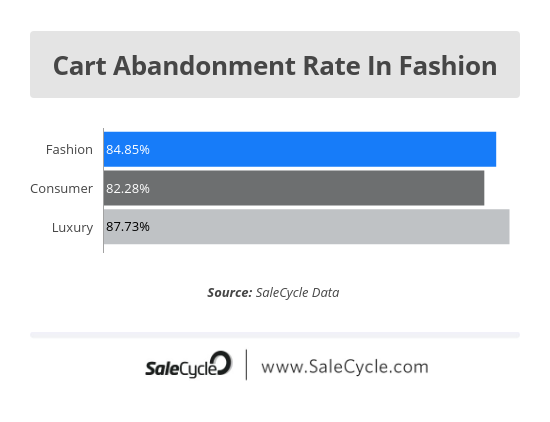

Cart abandonment recovery is a tactic that will work for any retailer, but with higher abandoned basket values, a strategy for recovering lost sales can be a valuable source of income for luxury brands.
The average order value for recovered sales from luxury brands was £484.65 in the first six months of 2019. For fashion overall, the average recovered order value is £147.79.
The design of cart abandonment emails may differ for luxury brands, as in this stripped-down example from Balenciaga, but they work just as well. Cart abandonment emails for luxury brands have some of the best performance stats of any marketing email, with open rates averaging 44.84% and conversion rates at 27.58%.
The Impact of Selling High End Luxury Products
Luxury retail is all about experience. An online presence doesn’t have to detract from the traditional luxury experience, or replace stores. Instead, it should aim to complement it by providing a choice of channels that reflects consumer preferences, and delivering a great experience however shoppers choose to interact.
In the first six months of this year, SaleCycle tracked the behaviour behind more than 235 million online fashion purchase journeys.
With this data and insight, we’ve created a report looking at the current state of the online fashion market, key stats and trends in buying behaviour, as well as useful strategies and best practices for all fashion ecommerce sites. Download your copy of the Fashion Trends Report soon.
Speak to an expert
Learn how to convert your online audience into revenue with our experts.
Graham Charlton
Graham Charlton is Editor in Chief at SaleCycle. He's been covering ecommerce and digital marketing for more than a decade, having previously written reports and articles for Econsultancy. ClickZ, Search Engine Watch and more.
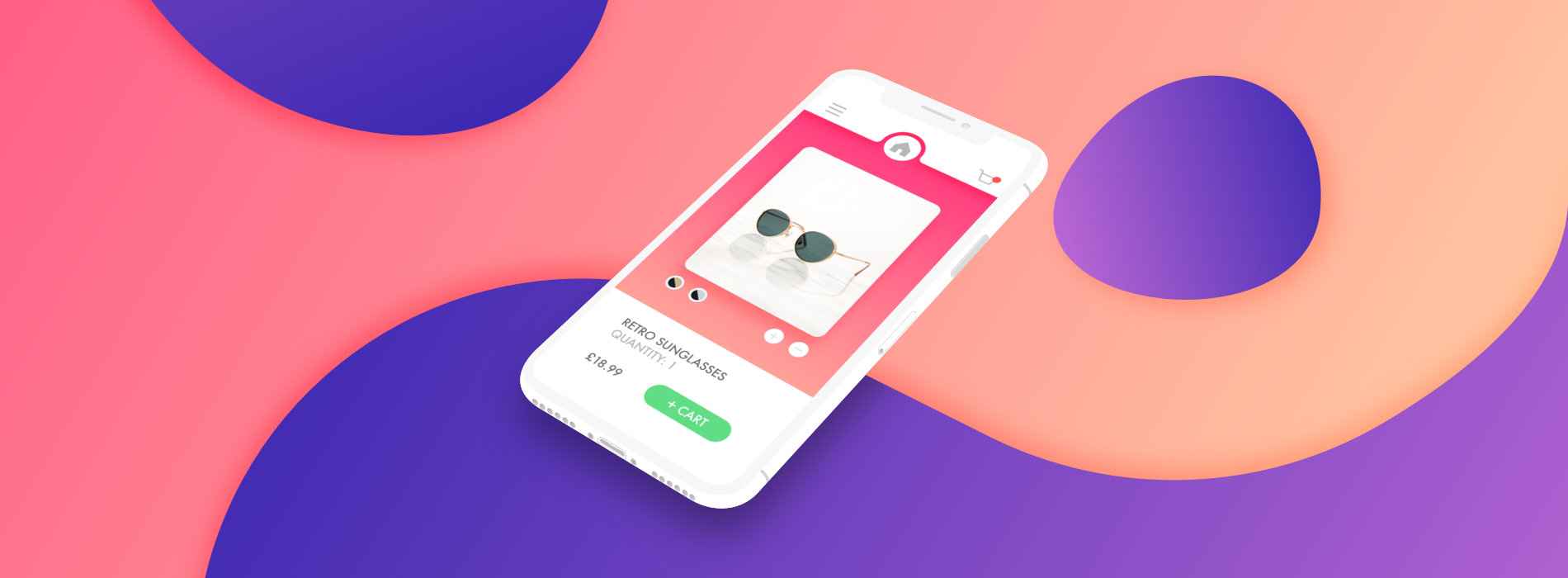








![Valentine’s Day Ecommerce Tips and Trends [2024 Strategy]](https://www.salecycle.com/wp-content/uploads/2019/01/valentines-ecommerce-1.png)



![How SaleCycle helped Vodafone increase their online sales by an additional 2,000 additional sales per month [Extended Version]](https://www.salecycle.com/wp-content/uploads/2023/08/vodafone-banner.webp)
